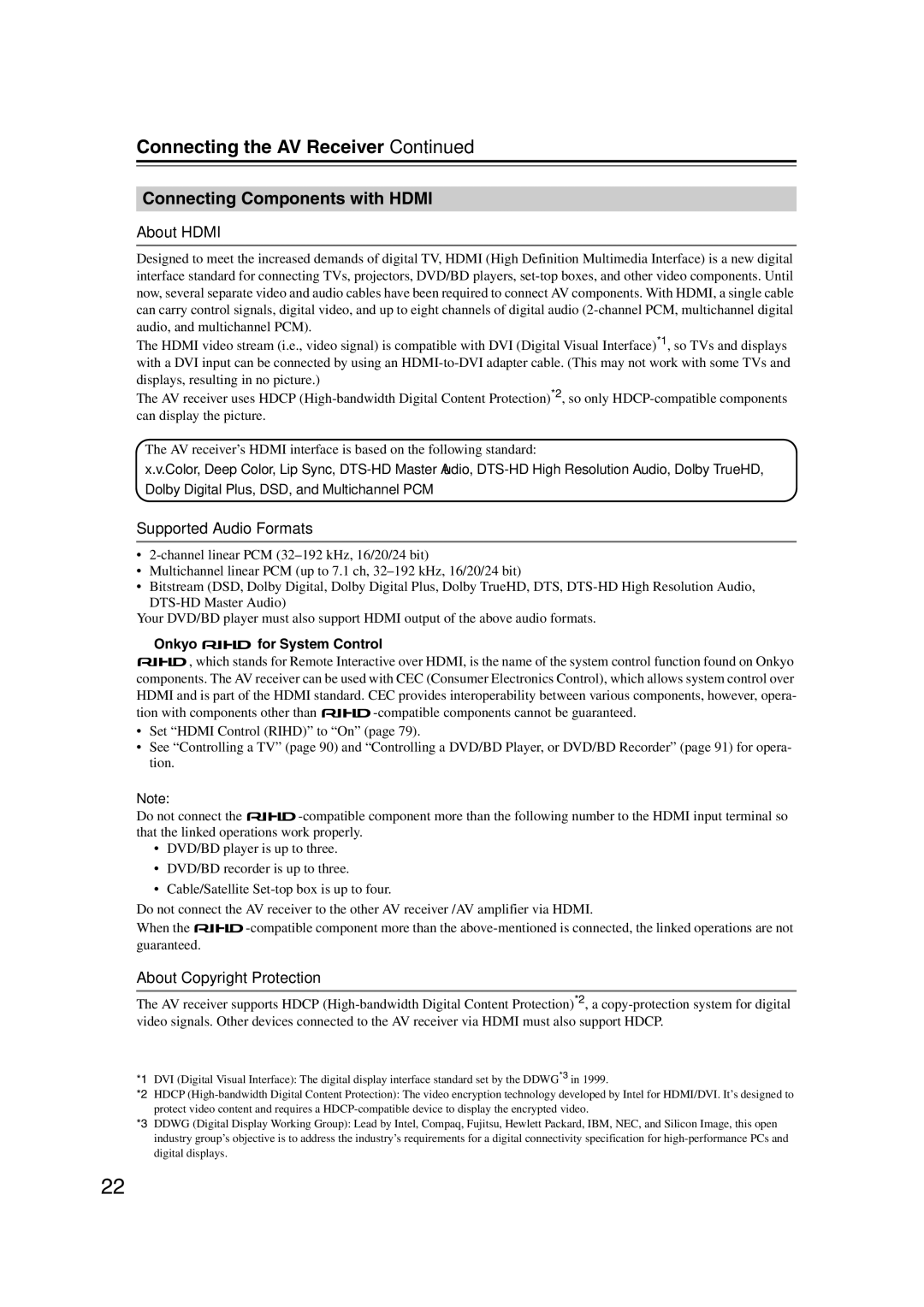HT-RC160 specifications
The Onkyo HT-RC160 is a versatile home theater receiver that provides a powerful audio experience, making it an excellent choice for enthusiasts seeking to elevate their home entertainment systems. With a sleek design and robust feature set, the HT-RC160 delivers remarkable audio quality, alongside extensive connectivity options.One of the key features of the HT-RC160 is its ability to support high-definition audio formats. The receiver is equipped with Dolby TrueHD and DTS-HD Master Audio decoding, ensuring that users enjoy an immersive sound experience equal to that of a cinema. This support for advanced audio formats allows for clearer, more dynamic sound with rich detail, perfect for movies, music, and gaming.
Featuring a seven-channel amplifier, the HT-RC160 delivers 100 watts per channel, allowing for a powerful performance that fills larger rooms. Users can easily configure their audio setup with its multi-room capabilities, which enable the use of independent zone audio output. This feature allows different audio sources to be enjoyed in separate rooms simultaneously, enhancing the overall versatility of home audio entertainment.
Connectivity is another strong suit of the HT-RC160, boasting an extensive array of input and output options. The receiver includes multiple HDMI inputs, allowing for seamless connection with various devices such as Blu-ray players, gaming consoles, and streaming devices. With support for 3D video and 4K pass-through, users can future-proof their home theater setup while enjoying superior picture quality.
Additionally, the HT-RC160 is equipped with Onkyo's renowned Audyssey technology, which automatically calibrates the audio settings based on room acoustics. This ensures that users experience optimal sound quality tailored to their specific environment, providing a balanced listening experience for any media type.
The receiver also includes USB input for easy access to audio file playback from USB storage devices, complementing its array of multimedia capabilities. The intuitive remote control adds convenience, allowing users to switch between sources, adjust settings, and navigate through audio and video options effortlessly.
In conclusion, the Onkyo HT-RC160 is a well-rounded home theater receiver that combines high-quality sound, advanced audio technologies, and flexibility in connectivity. Its powerful amplification, support for high-definition formats, and clever features like Audyssey calibration make it an ideal centerpiece for any home entertainment system. For those who aspire to enjoy movie nights, gaming, or music in the highest fidelity, the HT-RC160 stands out as an impressive option.

